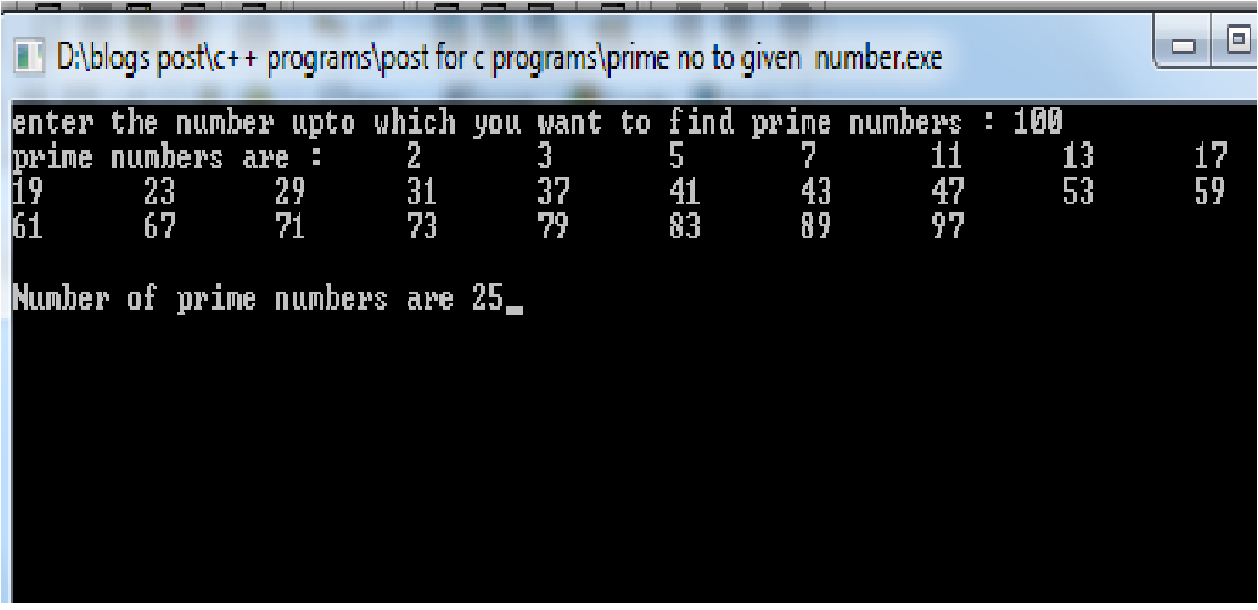

When the multiples sublime, The numbers that remain are Prime. Input: 5 2 3 4 5 6 Output: YES YES NO YES NO.

Sift the Two's and Sift the Three's, The Sieve of Eratosthenes. For each test case output string YES if given number is prime and NO otherwise. the if statement makes sure we ignore even numbers, even numbers greater than 2 are never prime numbers.

Prolog Program To Check If A Number Is Prime. This entry was named for Eratosthenes of Cyrene. Sometimes red cuts are crucial to a program but when overused, they are a bad programming practice. I wrote the following program based on the logic that a prime number is only divisible by 1 and itself. Hence the output consists of all, and only, the primes less than or equal to $n$.Įach step of the algorithm is basic enough to be done exactly and in a finite length of time. Though many Prolog textbooks have been published since, this one has withstood the test of time because of its comprehensiveness, tutorial approach, and. The output to this algorithm is the set $S$ without any multiples of any numbers no greater than $\sqrt n$.įrom Composite Number has Prime Factor not Greater Than its Square Root, it follows that all the numbers left in $S$ must be prime.īy the method of construction, no prime can have been deleted from $S$. Displaying the series but not the prime numbers from the following code. Initialize an array of data type int and assign value to it. Then passed the array to a method to check for prime. First, we import the package fmt that allows us to print anything. First, I implemented the code for Fibonacci then added each element into an array. Take a set of natural numbers $S = \set $. I want to find prime numbers from the Fibonacci series after printing them.


 0 kommentar(er)
0 kommentar(er)
